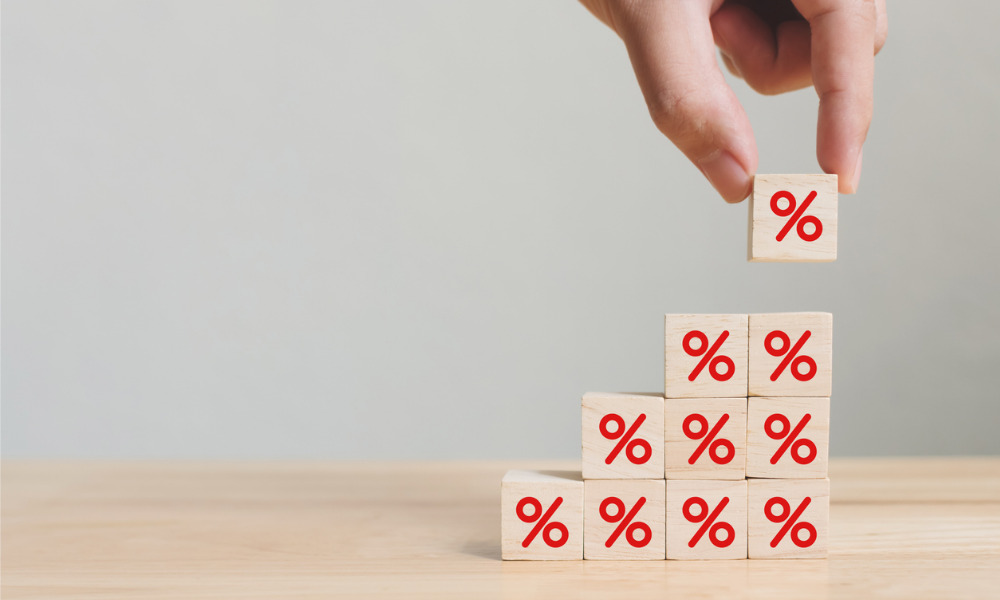Financial markets are pricing in a steep increase in interest rates that could send repayments soaring

Market watchers are predicting that borrowers could be paying 25% more on their mortgages within 18 months, with financial markets pricing in hikes pushing the cash rate from 0.1% to 2.25% by September 2023.
In an analysis of the impact on household finances of rapid monetary policy tightening, National Australia Bank found that a 2.25% rise in home loan rates would push interest payments as a proportion of household income from 4.4% to a 10-year high of 7.9%, The Australian reported.
NAB economists said it was “clear” that borrowers could afford the rise in repayments were this to occur, thanks to the minimum interest rate buffer banks use to determine borrowers’ capacity to repay. The Australian Prudential Regulation Authority lifted that buffer from 2.5 percentage points to three percentage points in November.
The economists said that while defaults wouldn’t spike, borrowers would have to make up the extra money through lower saving, less consumption, or both, unless the economy remains “very strong and wage growth accelerates considerably.”
Assuming a mortgage interest rate of 2.4%, monthly repayments on the average $600,000 loan are $2,660, The Australian reported. That would jump to $3,350 if the interest rate rose by 2.15 percentage points to 4.55%, as per market expectations.
Read next: RBA won’t follow US on rate hikes – board member
While borrowers would feel the sting, a lift in rates could be good news for lenders. NAB estimated that banks would see an extra $70 billion in mortgage interest payments each quarter should rates exceed 2% – or $280 billion per year, equivalent to 3% of GDP, The Australian reported.
Reserve Bank Governor Philip Lowe has said that the RBA recognises that the rapid increase in debt during the COVID-19 property boom has made the economy more sensitive to rate hikes, suggesting that the central bank will change policy more slowly than financial markets predict. Lowe recently said that market pricing of four or five rate hikes this year appeared overly aggressive. That pricing matched the projected rate path in the US, where inflation is about double what it is in Australia.



